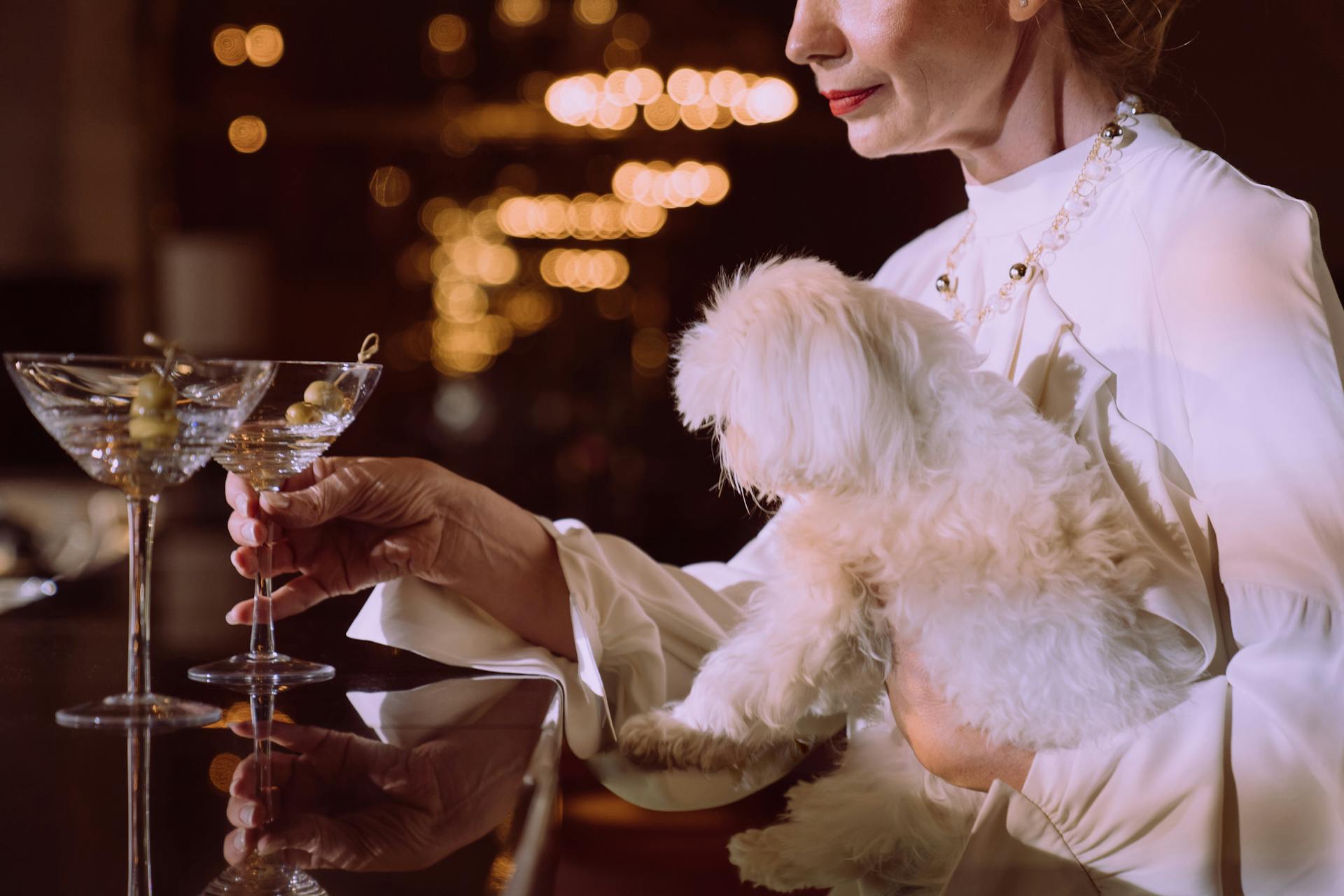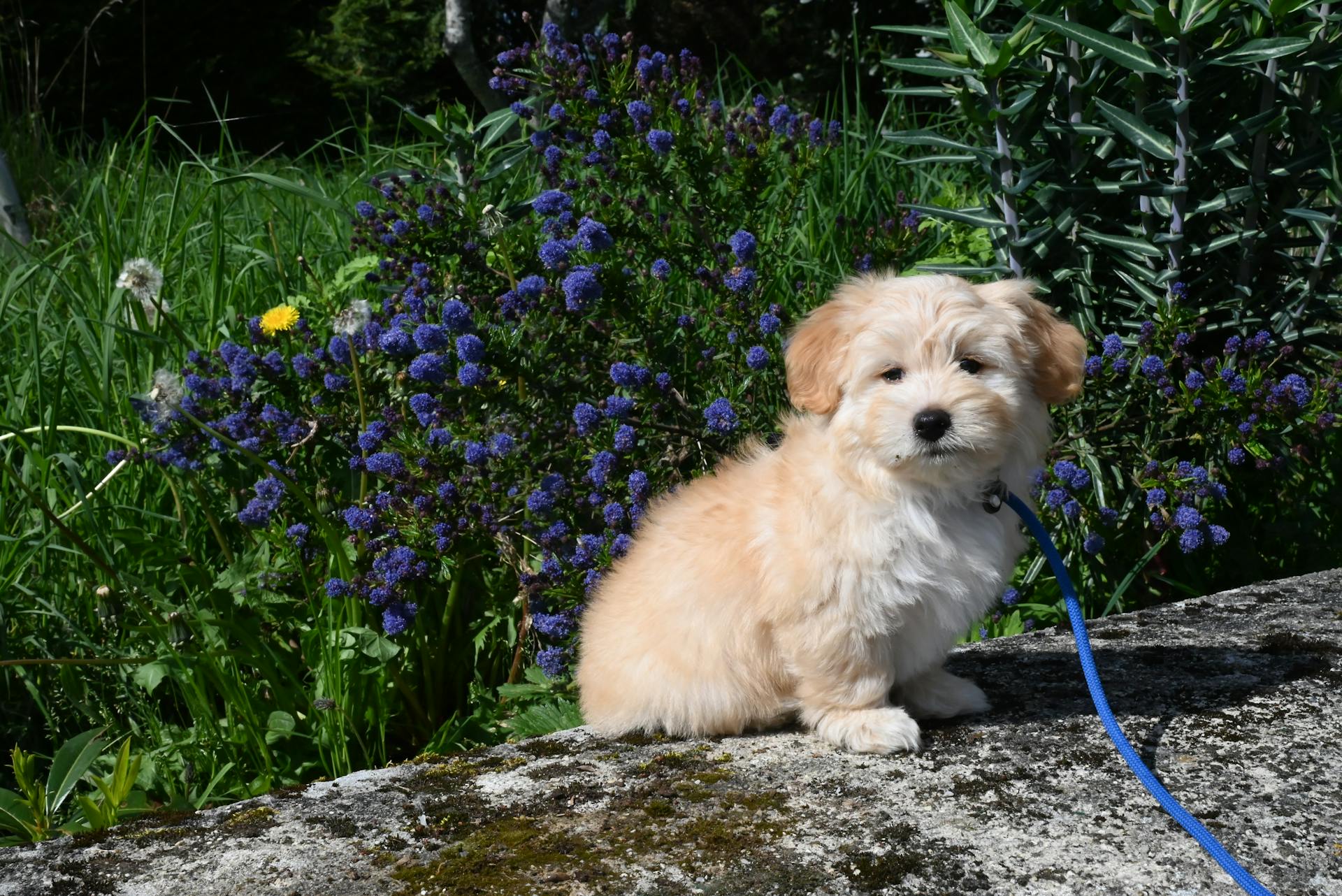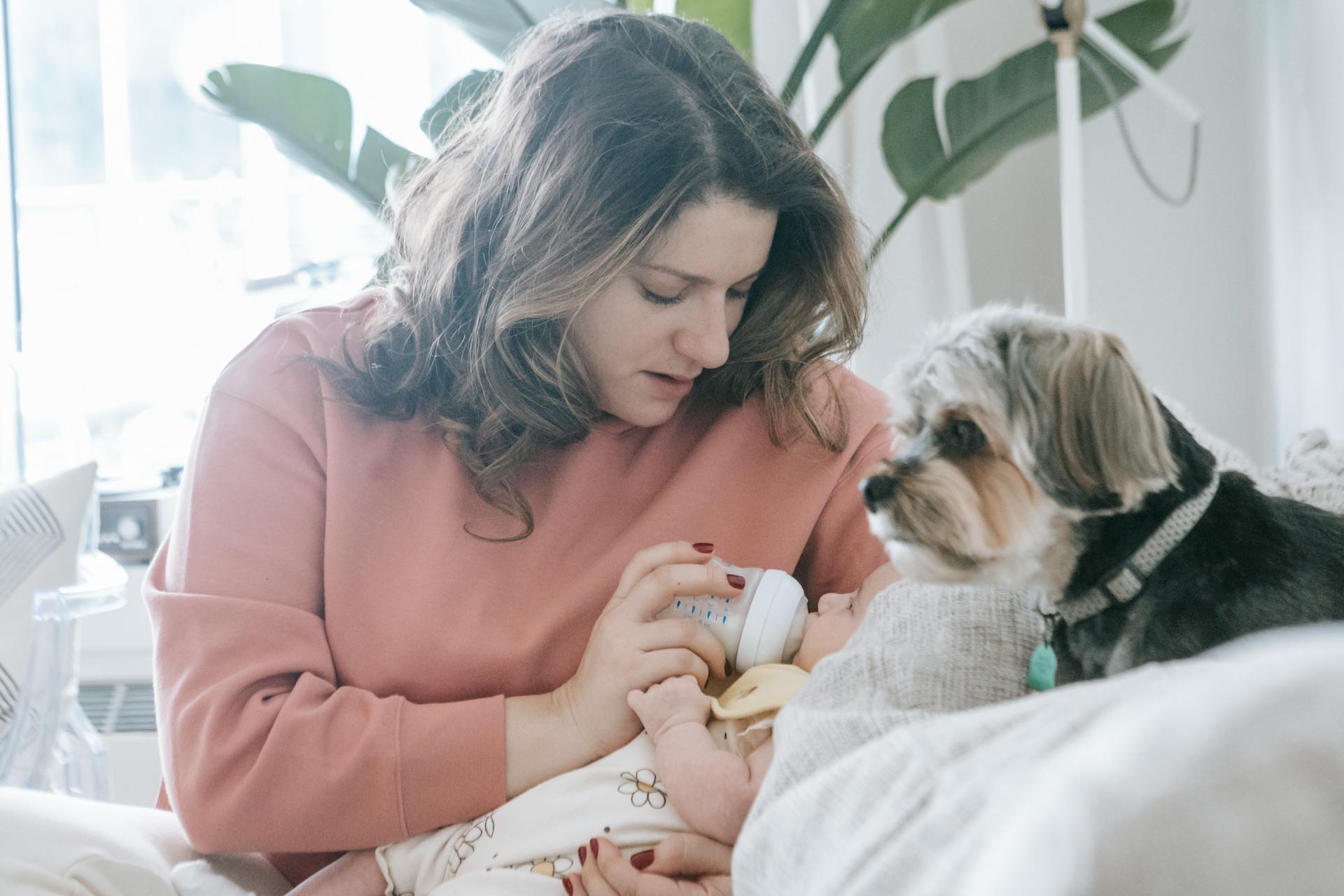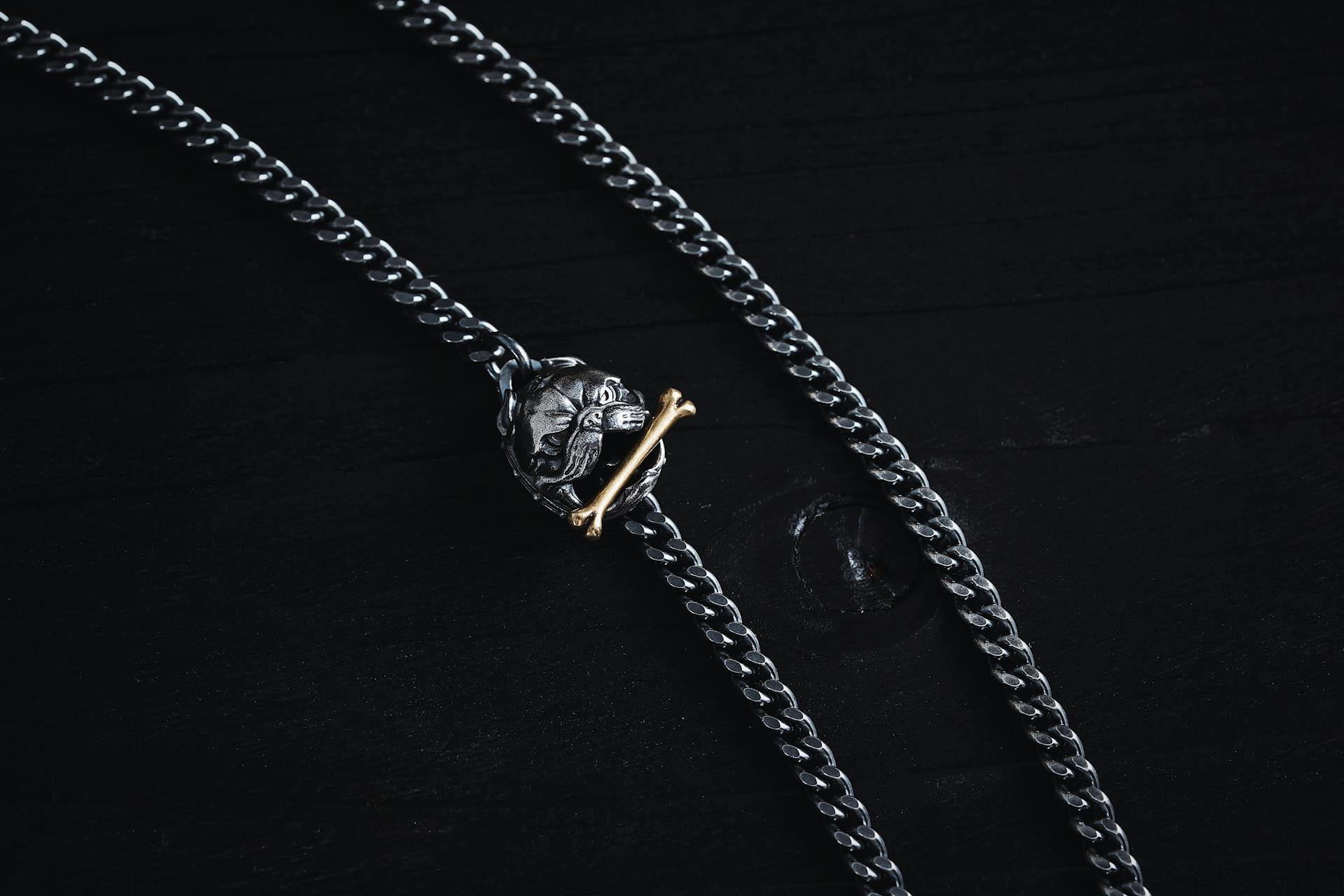
The Havanese Maltese is a crossbreed between a Havanese and a Maltese, resulting in a small, affectionate dog with a big personality. They are known for being gentle and playful.
Their intelligence and trainability make them a great choice for first-time dog owners. However, consistency and patience are key when training this breed.
Havanese Maltese dogs are adaptable to living situations, but they do require regular exercise to stay happy and healthy. A short walk or playtime each day is a great way to keep them entertained.
Their low-shedding coat requires regular grooming to prevent matting and tangling.
Temperament and Personality
The Havanesse Maltese is a social butterfly, thriving on human interaction and attention. They love to be around people and will often follow their owners everywhere.
These dogs are incredibly affectionate and form strong bonds with their owners. They're known to be velcro dogs, sticking close to their owner's side whenever possible.
Their friendly nature makes them great with children and other pets, but they can be reserved around new people or animals if not properly socialized. Early exposure to new things can help them overcome this.
Havanesse Maltese dogs are intelligent and quick learners, responding well to positive reinforcement training methods. They're eager to please their owners, making training relatively easy.
Despite their small size, they can be quite alert and make excellent watchdogs, barking when they sense something unusual or unfamiliar. Their loyalty is a hallmark trait, and they'll go to great lengths to protect and comfort their owners.
Their playful and attentive nature makes them a joy to be around, and they love nothing more than curling up on the couch with their family. They're not as energetic as some breeds, but they're lively and playful in their own way.
Worth a look: Havanese Dog Training
Grooming and Health
The Havanese Maltese requires regular grooming to prevent matting and keep their coat clean. Brushing their coat at least 2-3 times a week, or daily if possible, is essential to prevent mats and tangles.
Their long, silky coat sheds very little, but it can get tangled and knotted if not combed regularly. Regular brushing also helps prevent haircuts, which can be a cooling effect during summer months.
To maintain their overall health and comfort, it's crucial to establish a grooming routine early in their life. Regular grooming not only keeps them looking their best but also contributes to their overall health and comfort.
Here are some common health issues associated with Havanese Malteses:
- Allergies
- Elbow Dysplasia
- Cataracts
- Glaucoma
- Hypothyroidism
- Hypoglycemia
- Hip Dysplasia
- Legg-Perthes Disease
Grooming
Regular brushing is essential for Havamalts to prevent matting and keep their coat clean.
You should aim to brush your Havamalt's coat at least 2-3 times a week, if not daily, to prevent mats and tangles.
Their coats can mat up quite quickly if they don’t get very regular brushing.
Use a pin brush or a slicker brush to gently remove loose hair and debris.
Brushing their coat regularly will also help prevent haircuts from being necessary as often.
You might enjoy: Best Brush for Havanese
Bathe your Havamalt as needed, typically every 4-6 weeks or when they get dirty.
Use a high-quality dog shampoo and conditioner to maintain the softness and shine of their coat.
Regularly cleaning their ears is crucial to prevent wax buildup, dirt, and infection.
You can use a veterinarian-recommended ear cleaner and a soft, damp cloth or cotton ball to gently clean their ears.
Daily or at least a few times a week, brush their teeth using a dog-specific toothbrush and toothpaste.
This will help maintain their dental health and prevent dental problems.
Be gentle when cleaning the area around their eyes to prevent tear staining.
Gently clean the area around their eyes with a damp cloth to remove any discharge and prevent staining.
Broaden your view: Havanese Eyes
Health Issues
Havamalts are generally healthy dogs, but like all breeds, they can be prone to certain health issues.
Luxating patella, hip and elbow dysplasia, and deafness are potential health concerns in Havamalts.
As a responsible owner, it's essential to be aware of these potential health issues and take proactive steps to maintain your dog's well-being.
Eye infections, ear infections, cataracts, and glaucoma are also common health issues in Havamalts.
Here are some common health issues associated with Havamalts:
- Luxating patella
- Eye infections
- Ear infections
- Cataracts
- Glaucoma
- Canine hip dysplasia
- Elbow dysplasia
- Hypothyroidism
- Allergies
Lifespan

The lifespan of a Havamalt is a significant consideration for any dog owner. It typically ranges between 12 to 15 years.
To ensure your Havamalt lives a long and healthy life, regular vet visits are crucial. This allows for early detection and proactive management of any potential health concerns.
A Havamalt's lifespan is relatively consistent with that of its parent breeds, the Havanese and the Maltese. Both of these breeds are known for their longevity.
By providing consistent care and attention to your Havamalt's physical and emotional well-being, you can help extend their lifespan.
Puppies and Owning a Dog
Owning a Havamalt puppy requires some research and preparation. It's essential to know who your puppy's parents are and to ask for their health certificates.
You'll want to consider whether you have the lifestyle to accommodate a Havamalt's needs, as they can suffer from separation anxiety if left alone for too long. This might mean making arrangements for someone to be home with your dog during the day.
If you're a first-time dog owner, a Havamalt can be a great choice due to their easy-going nature and ability to get along with children and other pets. They're also intelligent and respond well to training with consistency and positive reinforcement.
Puppies
If you're considering bringing a Havamalt puppy into your home, it's essential to know that they can be a second or third generation breed, meaning they may have Havamalt parents rather than a Maltese and a Havanese.
This is a good thing for the breed's development, but it's crucial to research the breeder and ask about the puppy's parents to avoid potential problems.
You should also ask to see the health certificates of the puppy's parents and personally visit the kennel before making a purchase.
Havamalts are fiercely devoted to their family and can suffer from separation anxiety, which means they may pace, whine, or tremble when left alone.
They need someone to be home during the day to keep them company, or they may become destructive by chewing, digging, or using the bathroom on the floor.
Potty training can also be a challenge with Havamalts, as it is with many smaller breeds, including the Maltese and Havanese.
Consistent training at an early age and establishing a routine can help your Havamalt become a well-trained and well-mannered member of your household.
For more insights, see: Havanese Potty Training
Owning a Dog
Having a dog can be a life-changing experience, and it's essential to consider the responsibilities that come with it. You'll need to commit to caring for your dog for its entire life, which can range from 10 to 17 years.
Dogs require regular exercise to stay healthy and happy, so be prepared to spend time walking, running, or playing with your furry friend. A daily walk of at least 30 minutes is recommended.
Your dog's diet will also play a significant role in its overall health, and you'll need to decide on a suitable food that meets its nutritional needs. A high-quality dog food can cost anywhere from $50 to $100 per month.
As you get to know your dog's personality, you'll learn what makes it tick and how to tailor your care to its unique needs. Every dog is different, so be patient and observe your dog's behavior to understand its quirks.
Explore further: Havanese Feeding Chart
Training is also crucial for a well-behaved dog, and consistency is key. You can start with simple commands like "sit" and "stay", and gradually build up to more complex tasks.
As your dog grows and matures, you'll need to consider its grooming needs, which can range from nail trimming to regular bathing. Some dogs require more frequent grooming than others, so be prepared to adapt to your dog's specific needs.
For your interest: Havanese Grooming Styles
Breeders & Costs
Finding a reputable breeder is crucial when looking for a Havamalt puppy. Check reputable websites like the American Kennel Club (AKC) or the Havanese Club of America for breeder listings and resources.
Asking for personal referrals from people who have acquired puppies from reputable breeders can be valuable. Local dog clubs, veterinarians, or Havamalt owner groups can also provide recommendations.
Reputable breeders often have a web presence or are listed on breeder directories. Ensure that the breeder conducts health screenings for genetic conditions common in Havanese and Maltese breeds.
The cost of a Havamalt puppy can vary based on several factors, including the breeder’s reputation, the puppy’s pedigree, health clearances, and geographic location. On average, you can expect to pay between $800 to $2,500 for a Havamalt puppy.
Prioritizing the health and well-being of the puppy should be your primary concern. Choose a breeder who prioritizes responsible breeding practices, health, and the welfare of their dogs.
Intriguing read: Havanese Dog Health Issues
Rescues & Shelters
If you're considering adopting a puppy, one of the best ways to do so is by visiting a rescue or shelter. You can find loving dogs in need of a home.
Adopting from a rescue or shelter is a great way to provide a loving home to a dog in need. While Havamalts may not be as common in shelters as some other breeds, you can still find mixed-breed dogs with similar characteristics.
There are organizations dedicated to finding homes for dogs of specific breeds, and they may occasionally have Havamalts available for adoption. These organizations include the American Maltese Association Rescue and Havanese Rescue Inc.
If you're interested in adopting a Havanese Maltese Mix, you can start by visiting the American Maltese Association Rescue or Havanese Rescue Inc. websites to see if they have any available dogs.
For your interest: Toy American Eskimo
Size and Appearance
Havamalts are small-sized dogs, typically falling within the range of 8 to 12 inches in height at the shoulder.
Their adult size is quite compact, making them a great fit for city living or homes with small yards. They are considered a toy or small breed.
Their tiny, slightly rounded heads are a distinctive feature, and their expressive, almond-shaped eyes are always dark and alert.
The ears are often floppy and covered with long, silky hair, adding to their adorable appearance. The chest is deep, and the tail is often carried high with a slight curve.
Their coat can have a slight wave or curl, reminiscent of the Havanese parent breed, and is typically white or cream in color. However, they can also display a variety of coat colors, including shades of black, silver, sable, or chocolate.
Socialization and Training
Socialization and Training are crucial for Havamalts to grow into well-adjusted and confident companions.
Havamalts are highly intelligent and love learning new tricks, making training a great way to spend time with them and provide mental stimulation. They respond well to praise and rewards, such as hugs, play sessions, and treats, when they get something right.
Early socialization is essential to prevent shyness or fearfulness, so expose your Havamalt to various situations, environments, and people from a young age. Interactive play sessions, like fetch and hide-and-seek, are great ways to engage your dog and provide mental stimulation.
Socialization
Socialization is a crucial aspect of your dog's development, and it's essential to start early.
Exposing your dog to various situations, environments, and people from a young age can prevent shyness or fearfulness.
Interactive play sessions are a great way to socialize your dog, and they'll enjoy games like fetch, tug-of-war, and hide-and-seek.
Engage your dog in puzzle toys and treat-dispensing toys to provide mental stimulation.
Training
Training is a great way for Havamalts to spend time with you and can be a mentally stimulating activity.
Havamalts love learning new tricks and are usually eager to please their owners. They respond well to praise and reward-based training methods.
Aggressive or forceful training methods can actually do more harm than good, so it's best to stick with positive reinforcement techniques. Praise and reward your Havamalt with a hug, a short play session, or a treat when they get something right.
Socialization is also a crucial part of training, especially for young Havamalts. Get them used to new people, dogs, and other animals from an early age.
Introducing your Havamalt to new sounds and smells is also important, so take them on regular outings to expose them to a wide range of experiences.
Frequently Asked Questions
How much does a Havanese Maltese cost?
The cost of a Havanese Maltese can range from $800 to $1,500, depending on lineage and breeder. Consider adopting from a shelter or rescue for a potentially lower cost and a loving companion.
What's the difference between a Maltese and Havanese?
Maltese and Havanese are both small, low-maintenance breeds that require regular grooming, but differ in trainability and housetraining ease
What are the pros and cons of the Havanese dogs?
The Havanese is a gentle and affectionate breed with a confident temperament when socialized properly, but may be cautious around strangers. They are intelligent and independent, making them a great companion for active owners who can provide the necessary attention and exercise.
Are Maltese and Havanese the same?
No, Maltese and Havanese are distinct breeds with some differences in temperament and training needs
How big do Maltese Havanese mixes get?
Havamalts typically grow to 9-12 inches tall and weigh 5-12 pounds, making them a small to medium-sized breed
Featured Images: pexels.com


